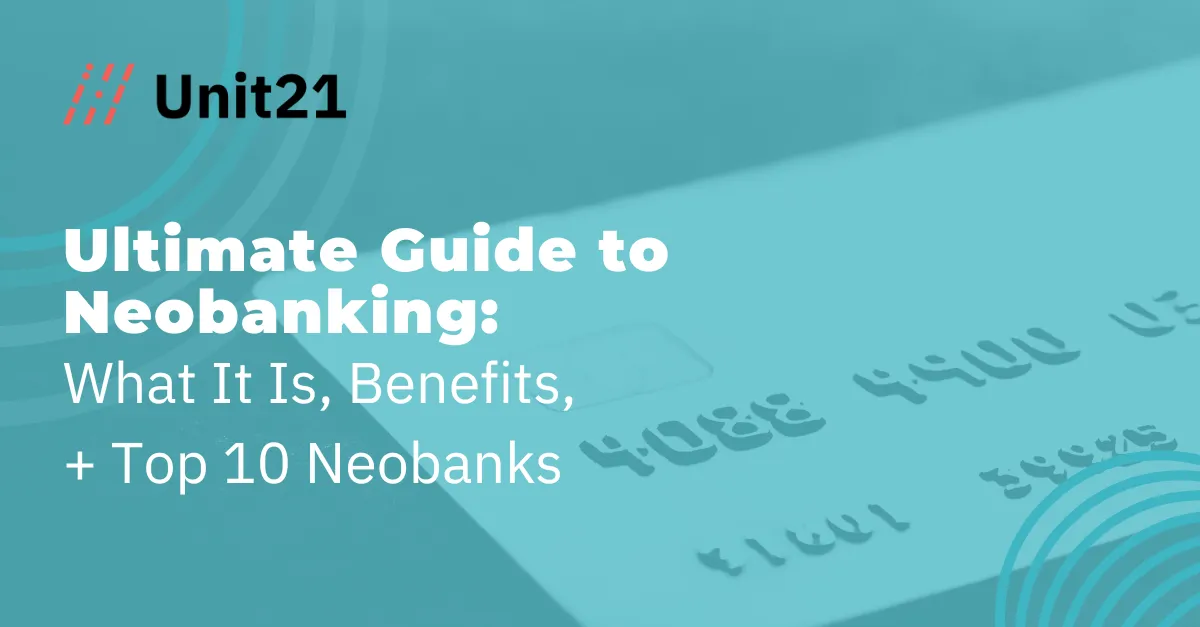

Over the past few years, neobanks have begun to rise in popularity as an alternative to traditional banking. Neobanking has become a popular topic of conversation in the tech space, offering digital-only banking services that come with increased convenience, lower banking fees, and higher interest rates.
The topic of neobanking is often met with plenty of general questions: What is neobanking? What are the benefits of using a neobank? Are neobanks safe? To name a few.
However, when it comes to understanding things like neobank fraud and how these entities can be manipulated by bad actors looking to commit financial crime, questions like, “How can fraud specialists better prevent fraud and money laundering in neobanking?” and “Why are neobanks targets for fraud?” can bubble up to the surface, especially for those in the Risk and Compliance space.
Here, we’ll cover the basics of neobanking and dive into the specifics of how neobanks can build and operate effective Risk and Compliance programs that prevent financial crime attacks and keep customers safe.
Read on to learn about the following:
Let’s start by explaining what a neobank is.
“Neobanking” refers to the market of exclusively digital banking applications and organizations. A person does not visit a physical bank branch to withdraw or deposit physical cash, or meet in person with any financial agents to get advice or conduct in-bank transactions.
A neobank (or challenger bank) is a type of financial institution that operates exclusively online with no physical branches. They offer customers digital-only financial services that are designed to be convenient, accessible, and easy to use. With low operational costs, neobanks can offer lower banking fees and higher interest rates than traditional banks.
These Fintech companies gained popularity - and were widely adopted - in response to the 2007-2009 recession. They mostly offer standard banking services, such as checking and savings accounts, but can also be used for limited investing.
As digital-only services with no physical locations, they are often more flexible than traditional banks, offering lower costs and higher interest rates. They can adjust faster and more effectively to better serve their target market - and because of this, many cater to different areas of banking, such as budgeting, savings goals, or investing.
How Do Neobanks Make Money?
Neobanks are financial institutions that make money in many of the same ways that traditional banks do. Unlike traditional banks, neobanks offer low fees and high-interest rates - leaving many to wonder how they can thrive.
By offering entirely virtual services, neobanks can significantly cut costs that traditional banks still have - such as commercial space and service staff. With all services online, neobanks significantly reduce their overhead costs. This allows them to offer lower banking fees, drawing in more users that want to save on banking costs.
Neobanks use multiple business models to make money, but their main method is the use of interchange rates. When a customer makes a purchase from their neobank account, the merchant makes a payment to the associated card company (eg. credit card companies like Visa) to process the payment. The neobank then earns a commission from the payment received by the card company. This means that neobanks earn money from every transaction their customers make.
Other methods used by neobanks to earn money include offering premium accounts, offering SME accounts, offering loans and mortgages, charging overdraft fees, and using API integrations to extend their services.
Despite the fact that neobanks have a very different business model than traditional banks, they generate revenue in mostly the same ways as traditional banks.
It’s also important to note that neobanks work very closely with the traditional banking system; in fact, neobanks (and other Fintechs) always work with a sponsor bank that licenses the use of their financial operating number. Sponsor banks are federal or state chartered banks that facilitate transactions and other financial services on behalf of the neobank, and the sponsor banks are therefore responsible for regulatory compliance being followed.
Average Neobank Interest Rates
One of the biggest advantages of neobanking is the higher interest rates for saving accounts. The average neobank interest rates range from 0.5% to 2.5%. This is much higher than traditional banks, which typically offer an interest rate of 0.0% to 0.2%.
These higher APYs give neobanks a competitive advantage against their traditional competitors since customers are able to earn more off their savings. In fact, lower payments combined with higher interest rates are among the top reasons why many customers choose to use a neobank over a traditional bank.
Neobanking vs Online Banking
The terms ‘neobanking’ and ‘online banking’ are often used synonymously; while they both offer online banking options to users, they are not actually the same thing.
- Neobanks: Financial institutions that operated entirely online, supplementing in-person banking for improved convenience and reduced costs.
- Online banking: Refers to any banking done via the internet, which includes online banking options that traditional banking provides users.
So, while neobanks do offer online banking, the concept of online banking is far broader than the concept of neobanks, which offer only virtual services. Many traditional banks now offer customers online banking options via the web and mobile applications, but they are not exclusively virtual services.
In recent years, many traditional banks have introduced an online banking option. This allows their customers to access banking services through the bank’s website or mobile app in addition to visiting their local branch. Neobanks are also a form of online banking, but the main differentiator is that these FIs lack physical branches and eliminate the need for them by only offering basic banking services.
Because of this, neobanks are typically able to offer lower service fees to users than traditional banks. Since neobanks operate exclusively online, their user experience is often the center of their focus. With this at the center of their offerings, neobanks typically provide better user experiences than their traditional banking counterparts.
Neobanks get their second name - challenger banks - from their direct competition with traditional financial institutions.
Traditional banking broadly refers to FIs within the traditional financial industry, such as big name banks, credit unions, and other financial institutions that can be visited in person. They have physical branches with dedicated service staff, regional headquarters, and dedicated account managers. As long-standing institutions, these banks have developed trust and loyalty with customers.
Neobanks exist as an alternative to traditional banking by providing online-only banking services with a primary focus on offering convenience for customers in the modern age.
To better understand how neobanks challenge traditional banks, here’s a list of the key differences between the two:
- Neobanking services are only accessible through the web and mobile apps, while traditional banking offers in-person branches.
- Traditional banks offer high fees that are complicated to understand, while neobanks offer low fees that are more transparent.
- Customer support for neobanks is accessible through the phone and online, while traditional banks require some services to be accessed in person.
- While the approval processes for services and transactions with traditional banking is lengthy and manual, neobanks use technology that makes theirs quick and automatic.
Ultimately, the main difference between neobanks and traditional banks is based on how you access their services, which happen to come with a host of other benefits aside from accessibility. Let’s explore the top advantages to see why someone would use a neobank over a traditional bank.
Demand for faster, more convenient, and fully digital banking services has led to massive increase in the number of neobanks—and the size of the market itself.
Partnerships with major banks and entrenchment in the financial industry has made customers more comfortable with these traditional banking alternatives—and have become more comfortable with trusting them with larger sums of money.
Leading industry analysts only expect this growth to continue through 2030. Grand View Research expects the current USD 66.82 billion neobanking market to grow at a compound annual growth rate (CAGR) of 54.8% through 2023 to 2030, slightly higher than their prediction of 53.4% for 2022 to 2030. At this rate, the global neobanking market size should exceed USD $2,000 billion by 2030.
As consumers look for faster, frictionless banking options, financial services will shift even more heavily to entirely digital spaces—making it a lucrative market with potential to grow significantly in the next decade.
Modern technology, and its ability to offer a customer-centered experience for users, has made way for a new generation of customers with different expectations. Namely, faster, more convenient services at their fingertips.
While it may be surprising that neobanks offer enough of a draw to pull customers away from traditional banks that have developed trust and loyalty over years of service, the fact is, neobanks have a lot to offer:
- Low costs: With little operational costs, neobanks can offer lower fees and higher interest rates on checking and savings accounts, making banking more affordable.
- Convenience: Customers can open an account and access neobanking services 24/7 without needing to visit a branch; all services are digitally accessed and therefore always available.
- Streamlined service: Customers gain access to more seamless, faster user onboarding and on-demand service, without having to wait to be served.
- Optimized UX: As online-only services that excel at convenience and accessibility, most of these solutions have prioritized and optimized their user interface and user experience.
- Customer service: Despite there being no branches, neobanks offer 24/7 customer support through digital channels, and often have dedicated phone lines as well.
The above advantages of neobanks are the reason why many are turning to Fintech and neobank companies. Now, let’s take a look at some of the neobanking companies that offer these benefits.
According to neobank statistics, the global neobanking market is expected to surpass $2 billion USD by 2030. With the growing popularity of digital banking, it’s no surprise that many new neobanks have entered the market.
While there are new neobanks starting all the time, there are neobanks that have developed reputations within the space, making them worthy competitors of traditional banks. This section will cover some of the top neobanks and what they have to offer.
1. Chime
.webp)
Best for: Saving Money | Credit Building
Chime is a neobank that is committed to making basic banking services easily accessible. They offer checking accounts, savings accounts, and credit cards - all for no monthly fees. Their app also helps users stay on top of their spending with daily notifications.
2. Lili
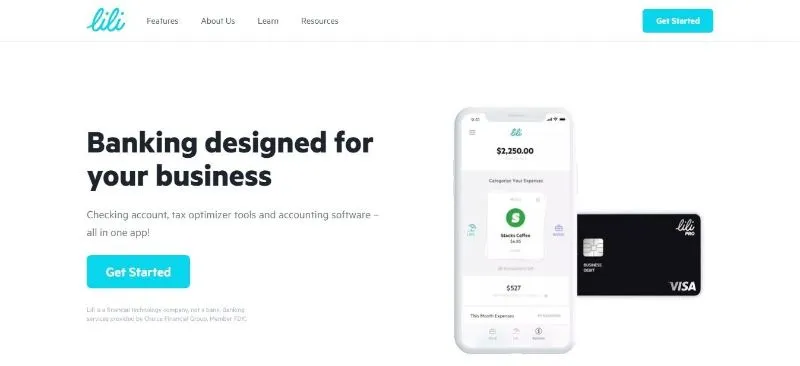
Best for: Small Business Banking | DIY Accounting
Lili is a great neobanking option for small businesses and freelancers looking to manage their finances. In addition to offering a Business Debit Card, the app lets users access tools to assist with business taxes and accounting. They’re also FDIC-insured and use top security and encryption software.
3. Revolut

Best for: Money Management | Investments | Travel Perks
Revolut has been one of the UK’s top neobanks since 2015. They offer a wide range of services, including personal banking, investments, and pet insurance. They also offer travel perks for those on-the-go or who need to regularly transfer money abroad.
4. Aspiration

Best for: Sustainability
Aspiration is a neobank with a social purpose. Their purpose is to offer eco-friendly banking that helps customers take control of their spending while saving the planet. The best part is that Aspiration will plant a tree every time a customer makes a purchase.
5. Monzo

Best for: Saving Money | Flexible Payments
Another popular UK neobank is Monzo. Their product is designed to help customers take control of their spending using groups (called Pots) and trend reports. They also offer an alternative to credit called Monzo Flex, which allows customers to divide their payments into three installments.
6. Varo
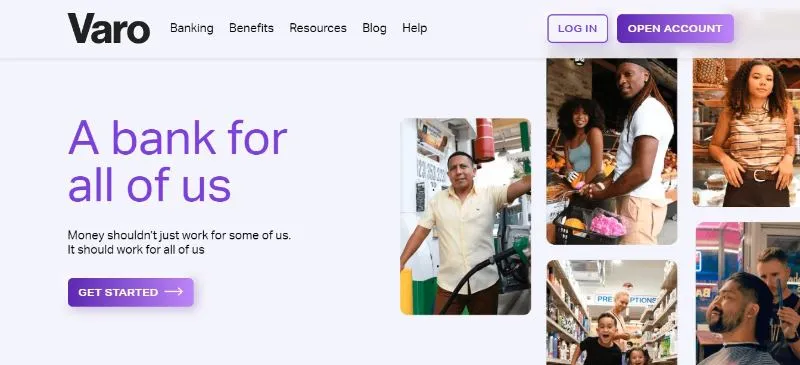
Best for: Banking
Varo is another neobanking option for basic banking services. They offer checking accounts, savings accounts, credit cards, and advanced payments. Additionally, there are no overdraft fees, since they’re committed to helping customers only spend what they have.
7. N26

Best for: Banking | Budgeting | Insurance
N26 is a European neobank that has been voted one of the world’s best. They offer various types of personal and business bank accounts to fit every customer’s needs, as well as guidance on how to budget their finances. Customers can also use N26 for insurance plans for their electronics - and they’ll soon be able to insure their homes, pets, and more.
8. Current

Best for: Banking | Youth Banking Services
Current has established itself as a neobank for the modern generation. Their services help customers looking to better manage their money while banking on the go. They’re also a great choice for teens who are new to banking and learning how to save and spend their money.
9. Starling Bank
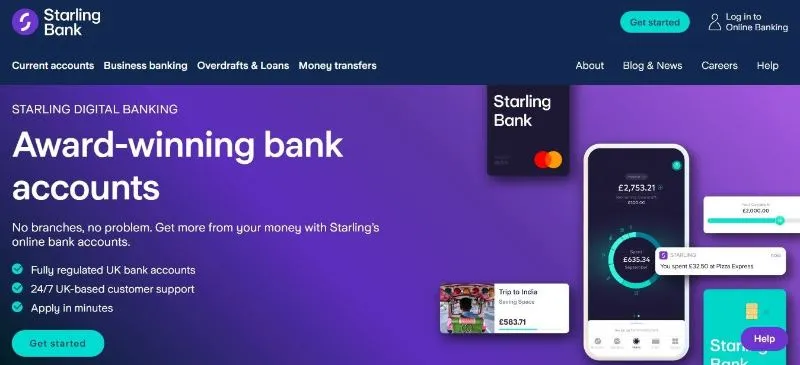
Best for: Banking | Loans | Money Transfers
Starling Bank is one of the best UK neobanks for customer service. Customers can open a personal, business, or sole trader account that is accessible through mobile and online banking. They can also send and receive international payments, and they have access to 24/7 customer service whenever questions or concerns arise.
10. Atom bank
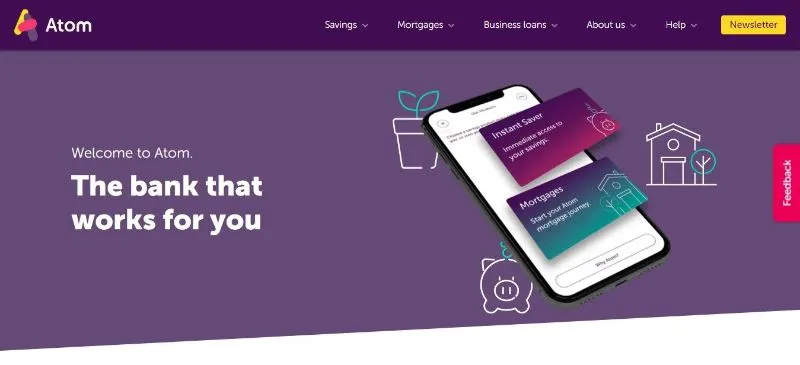
Best for: Savings | Mortgages | Loans
Atom bank was the first app-based neobank in the UK and continues to prioritize their customers. This neobank allows users to open a savings account that is easy to manage, and it can help users earn money with interest. They also offer mortgages and business loans to their customers.
The short answer is yes. When it comes to Fintech and neobanks, their innovative nature and quick onboarding experience have created loopholes for fraudsters to use to their advantage. As a newer technology that is rapidly changing, criminals seek to exploit weaknesses in their security.
Neobanks constantly struggle to balance a quick, seamless onboarding and user experience with adequate compliance standards. The more fraud prevention systems (biometric verification, two-factor authentication, etc.) in use, the more friction there is for a new user trying to onboard. However, too few preventive measures will fail to offer the security needed.
It’s important to remember that neobanks don’t operate separately from the rest of the financial industry; they work closely with traditional banks and other financial institutions regularly - to facilitate transactions, to perform proper identity verification, and so much more. The reality is that neobanks, based on their operation within a highly regulated field, enjoy the luxuries of a pre-existing, robust regulatory infrastructure that ensures compliance and protects against fraud and money laundering.
While no universal standard for neobank regulation exists, several KYC regulations have been introduced to set the standard for fraud prevention and detection in the industry. The use of KYC tools, such as identity verification and Transaction Monitoring software, has allowed neobanks to take control of their fraud prevention and AML strategies, while maintaining their competitive advantages.
With the rise of financial crime in the Fintech space, governing bodies have implemented various KYC and AML regulations to ensure that prevention and detection are top priorities. Maintaining Fintech compliance is crucial for neobanks to protect their customers and maintain their trust.
Ensuring compliance requires a lot of work, but it can be effectively managed by following these steps:
- Explore and select vendors to assist with KYC and transaction monitoring. Consider using a comprehensive solution that offers everything needed and simplifies workflows.
- Hire a compliance officer to lead and implement a compliance strategy.
- Ensure regulatory requirements are automatically integrated into the platform’s tech stack.
- Maintain compliance for your neobank by staying up-to-date on all the regulations that apply to your business and jurisdiction.
- Leverage a consortium of risk assessments to determine if users have a history of fraud before onboarding them.
These steps might seem like a lot, but they can be done efficiently with the right tools. Neobanks can benefit from the use of fraud and AML solutions to easily maintain compliance and keep their platform secure. Unit21 can help with operational automation and a rules-based engine that gives you customization (and control) over your compliance efforts.
Neobanking offers a competitive alternative to traditional banking, and its growing popularity shows promise for a successful future in the Fintech industry.
Modern bankers are switching to these digital-only services, gaining access to more convenient and flexible services for customers with busy lives, a customer-centered approach for those seeking support, optimized UI/UX on their apps and websites for better transparency and usability, lower costs for customers looking to save, and higher interest rates on savings accounts for customers looking to earn.
However, fraud and money laundering will always be a threat to neobanks. Maintaining compliance is necessary for neobanks to establish themselves as secure and trustworthy banking platforms. Using a Regtech solution allows Risk and Compliance teams to take charge of their compliance management and better protect their customers. Unit21 even helped Lili reduce fraud loss by 50%.
Schedule a demo if you want to see how Unit21 can help your neobank maintain compliance more efficiently.
Subscribe to our Blog!
Please fill out the form below:



